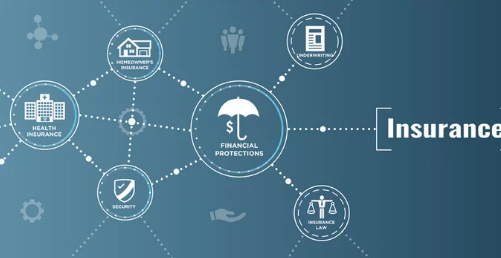The insurance industry is undergoing a massive transformation. What used to be a paper-heavy, one-size-fits-all business is now turning into a dynamic, tech-driven industry powered by artificial intelligence (AI), big data, and hyper-personalization. Insurers are moving away from rigid policies and are beginning to offer customized solutions tailored to each individual’s lifestyle, risk profile, and behavior.
This shift not only benefits customers with fairer pricing and faster services but also helps insurers reduce risks, improve efficiency, and stay competitive in a rapidly changing world. Let’s explore how AI, big data, and personalization are shaping the future of insurance.
1. AI: Revolutionizing Insurance Operations
a. Smarter Underwriting
Traditionally, underwriting relied on limited data like age, occupation, or medical history. With AI, insurers now use algorithms that analyze large sets of data to evaluate risks with higher accuracy. This leads to quicker approvals and more precise premium calculations.
b. Faster Claims Processing
AI-powered systems can automatically review claims, detect inconsistencies, and even approve straightforward cases without human intervention. This reduces waiting times and enhances customer satisfaction.
c. Fraud Detection
Insurance fraud costs billions each year. AI can spot unusual claim patterns, cross-check data, and flag suspicious cases faster than human investigators, protecting insurers and honest policyholders alike.
2. Big Data: Unlocking Deeper Insights
a. Personalized Risk Assessment
Big data collects information from various sources—social media, IoT devices, telematics, and health trackers. This gives insurers a clearer picture of customer behavior, helping them design policies that match real-world risks.
b. Predictive Analytics
By analyzing past behaviors, insurers can predict future risks. For example, driving data can forecast accident likelihood, while health data can signal potential medical conditions. Predictive analytics helps prevent losses and set fair premiums.
c. Real-Time Data for Dynamic Policies
Instead of static annual policies, insurers are beginning to offer dynamic ones that adapt in real time. For example, a driver who reduces their mileage could see their car insurance premium drop instantly.
3. Personalized Policies: Tailored Protection
a. Usage-Based Insurance (UBI)
Customers pay based on how much and how safely they drive, tracked via telematics or mobile apps. Safe drivers benefit from lower premiums.
b. On-Demand Coverage
Freelancers, gig workers, or travelers can now purchase short-term or event-based insurance—like health coverage for a week abroad or liability insurance for a single project.
c. Lifestyle-Based Policies
Wearables and fitness apps can influence health insurance pricing. Active individuals may receive discounts or rewards, encouraging healthier lifestyles.
4. Benefits of AI and Big Data in Insurance
- Fairer pricing: Premiums based on actual behavior, not broad demographics.
- Improved efficiency: Automated processes cut down on time and paperwork.
- Better fraud prevention: Early detection saves money for both insurers and policyholders.
- Enhanced customer experience: Faster service, transparency, and flexible options.
5. Challenges of a Tech-Driven Insurance Future
While the future looks bright, it comes with challenges:
- Data privacy concerns: Collecting personal data requires strict security and compliance.
- Bias in AI algorithms: Poorly designed models could lead to unfair discrimination.
- Regulatory hurdles: Governments must balance innovation with consumer protection.
- Customer trust: Policyholders may hesitate to share personal data unless they see clear benefits.
6. Real-World Examples of AI and Big Data in Action
- Auto insurance: Companies use telematics devices to monitor driving and reward safe habits.
- Health insurance: Fitness apps and wearables track activity and offer discounts for meeting health goals.
- Property insurance: Smart home sensors detect leaks or fire risks, reducing claims by preventing disasters.
7. The Road Ahead: Fully Personalized Insurance Ecosystems
The ultimate vision for the insurance industry is a fully personalized ecosystem where coverage adapts seamlessly to individual needs. Policies may adjust dynamically in real time, offering instant pricing changes and proactive risk prevention.
Imagine an AI-driven assistant that continuously monitors your lifestyle, alerts you to risks, and adjusts your insurance automatically—ensuring you’re always protected without overpaying.
Conclusion
AI, big data, and personalized policies are not just trends—they are the future of insurance. These technologies are reshaping the industry by making it smarter, fairer, and more customer-centric. While challenges like data privacy and regulation remain, the benefits of faster service, accurate pricing, and tailored coverage are too significant to ignore.
For insurers, embracing innovation is no longer optional—it’s essential. For customers, the future promises a world where insurance is simpler, more transparent, and built just for you.
FAQs
1. How does AI improve insurance claims?
AI speeds up claims by automating routine checks, detecting fraud, and approving simple cases instantly.
2. What is usage-based insurance?
It’s coverage where premiums depend on how you use something, like miles driven or lifestyle habits.
3. Are personalized policies more expensive?
Not necessarily—personalized policies often save money by aligning premiums with actual behavior and risk.
4. How do insurers use big data?
They use it for risk assessment, fraud detection, predictive analytics, and creating flexible, personalized policies.
5. Will traditional policies disappear?
Traditional policies may not vanish entirely, but they will increasingly be replaced or supplemented by dynamic, personalized options.






